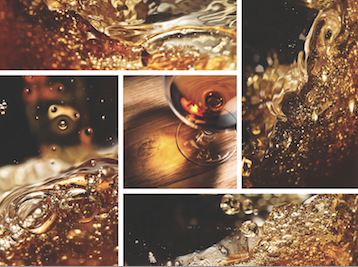..............................................
FROM THE LATE 1990S ONWARDS THERE WAS A PREDICTABILITY ABOUT SCOTCH WHISKY SALES. Almost every year the Scotch Whisky Association would announce another record-breaking performance in terms of volume and value in export markets around the world. Scotch was thriving and achieving growth in a comfortingly diverse range of locations.
And by ‘scotch’ the implication was, essentially, blended scotch because, despite the increasing interest in single malts, in terms of pure statistics, on a global basis blends have remained the big game in town, still accounting in volume terms for some 83% of all scotch sales.
Then, in September last year, the SWA declared that all was not so rosy in the scotch whisky garden. A statement from the SWA declared: “While scotch whisky exports to some key markets, such as France and Taiwan, increased in the first six months of 2014, the overall trend was downwards with economic headwinds and uncertainty having an impact.”
This was followed on April 1 this year by the news that “weaker economic conditions and political volatility in some markets saw the value of scotch whisky exports decline 7% to £3.95bn in 2014 from £4.26bn the previous year”, although during the calendar year there was significant volume and value growth in a number of important markets, such as India, Thailand and Japan.
Although single malts have seen growth in some markets, particularly those that are more ‘mature’ in terms of whisky sales, in many countries malts barely register and blends are really the only game in town.
They dominate in Singapore, for example, reflecting its role as a gateway for much of Asia, where blends generally sell much greater quantities than malts. Overall, Singapore is the world’s third-largest scotch whisky market in terms of value. Meanwhile, in the Americas, Mexico and Brazil, occupying 9th and 10th places in the ‘value’ table, are overwhelmingly blend markets.
So just where is blended scotch performing well against the overall trends for scotch as a category, and how are producers and their marketing teams ensuring its success in those territories?
The US remains by far the largest export market for scotch in value terms, both blended and malt, with Diageo’s Johnnie Walker being the leading super-premium blended scotch. Despite a worldwide drop of 12% in sales during 2014, the Johnnie Walker family remains the world’s best-selling blended brand, with almost 20% of global blended scotch sales being accounted for by entry-level Johnnie Walker Red Label and first step up Black Label.
Johnnie Walker may be a firm favourite in the US but, according to a Diageo head of whisky outreach Dr Nick Morgan: “Buchanan’s, now at more than 350,000 cases, is one of the hottest scotch brands in North America. In the six months to the end of December 2014, net sales were up 33% as it continued to leverage its strong connection with the Hispanic community. Scotch volume in the US continues to decline, but value is growing – this is a continuation of a 10-year trend toward premiumisation in the category.”




